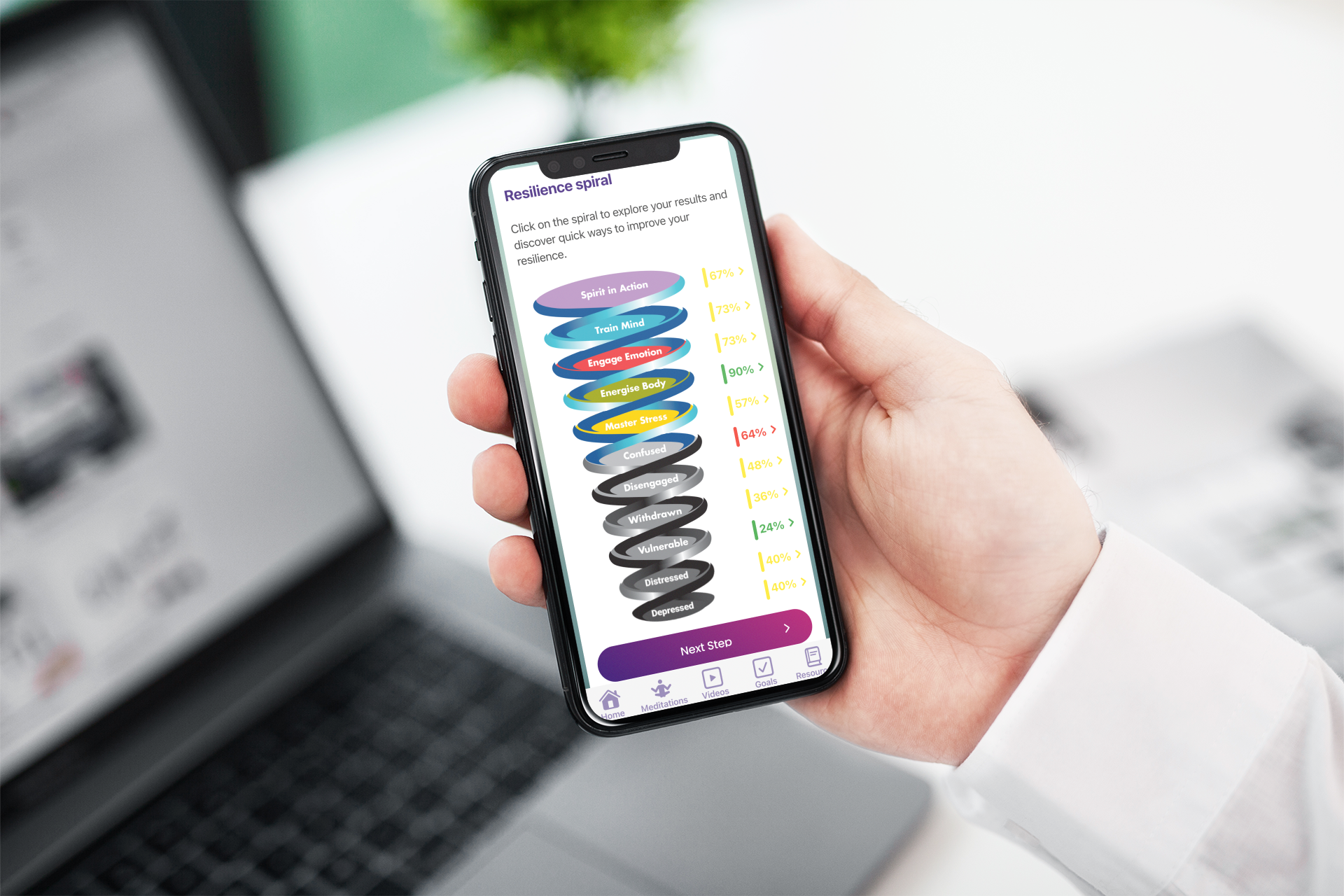
How to Run a Resilience Workshop
How to run a resilience workshop
Resilience enables individuals and teams to bounce forward from setbacks and to thrive amidst adversity. As a learned set of skills, resilience offers a competitive advantage in the modern business environment. HR leaders, who sit at the confluence of personnel development and organizational performance, play a critical role in fostering resilience within their organizations.
The cornerstone of such an effort often takes the form of a resilience workshop, an opportunity to both impart knowledge and foster the skills necessary for resilience. The challenge, then, is to ensure that these workshops are effective and produce lasting impact.
This article will guide you, the modern HR leader, through the process of planning, running, and evaluating a resilience workshop.
Understanding Resilience in the Workplace
Before diving into the practical aspects of conducting a workshop, it’s important to gain a solid understanding of what resilience means in the context of the workplace. Resilience is not only an individual trait but is also an organizational quality. It’s about adaptability, mental toughness, the ability to maintain equilibrium under pressure, and to recover quickly from setbacks. At the Resilience Institute, we define resilience as the learned ability to bounce, grow, connect and find flow. The key is equipping employees with the skills they need to achieve performance with care: care for self, others, the wider community, and even for our planet.
HR leaders should be aware that fostering resilience involves creating a supportive culture, one that allows for mistakes and encourages risk-taking within the bounds of reason, and one that prizes adaptability and growth over rigid adherence to outdated methods.
Planning the Resilience Workshop
There are several steps that should be considered before booking the workshop date. Consider which of the following fit your specific needs, budget and time availability.
Setting Objectives
The first step in organizing a resilience workshop is to set clear and attainable objectives. It could be to impart knowledge about the concept of resilience, to teach practical strategies for becoming more resilient, to encourage more resilient behavior, or all of the above. Having clear goals will guide the rest of your planning process and provide a benchmark against which you can later evaluate the workshop’s success.
Choosing the Content
Once you have established your objectives, the next step is to decide on the content. There are many tools and techniques that can help build resilience, and your choice will depend on your specific goals. Some possible topics could include stress mastery techniques, problem-solving methods, mindfulness exercises, and case studies of resilient individuals or organizations. Ideally you will select a holistic and inclusive model of resilience that provides both a map and framework for human growth and development. At the Resilience Institute, we base our training programs around the Resilience Diagnostic and Development Framework, also known as the resilience spiral. The spiral provides an integral and practical lens on the different states and stages of resilience that people experience of the course of live.

It is also imperative that the content is well-researched and reliable. Many training interventions, particularly in the resilience and well-being area, are dismissed as being “fluffy” or even “woo-woo” by skeptical participants. By presenting an evidence-based framework you will secure buy-in from the audience. The Resilience Institute model is evidence-based, drawing on research from several fields including neuroscience, epigenetics, positive psychology, preventative medicine, high performance sports and cognitive behavioral therapy. It is the accessibility of our model that resonates most strongly with the companies we support.
Remember, not every topic will resonate with every audience member. While sleep may be an issue for many of your employees (guaranteed that it is!) some likely sleep quite well. Ensuring that there is relevant content for them is essential.
Selecting the Format and Facilitator
Consider the format that will best suit your workshop objectives and the preferences of your participants. You could choose a traditional lecture-style format, or opt for a more interactive workshop with group discussions, role-plays, and exercises. During COVID most resilience training sessions were delivered online but now many organizations are choosing to bring people together for in-person training experiences. There are many benefits to in-person sessions, including the experiential aspect and the ability to encourage team dialog and discussion.
Your facilitator is also a critical decision. An external expert can bring a fresh perspective and credibility, while an internal facilitator might be better versed in the specific challenges your organization is facing. Both options can work well, and this guide can help you decide which is right for you.
At the Resilience Institute, we have worked with thousands of companies worldwide to deliver engaging workshops. Our network of global facilitators including thought leaders and resilience experts like Alexia Michiels, Dr Sven Hansen and Brad Hook are skilled at understanding your context and presenting sessions that blend theory with practical tools. Get in touch if you’d like to find out about our Precision Training approach.
Timing and Group Size
When scheduling your forthcoming training session, consider time of day and group size. While it may be tempting to schedule the session after lunch, people may be fatigued and distracted by events from earlier in the day. A morning session is usually more impactful than late afternoon. However, your facilitator should be able to energize the group and encourage interaction regardless of time of day.
Measure your Current Resilience Strengths and Risks
Measuring resilience is critical if you wish to discover the collective strength and risk factors across your team. The Resilience Diagnostic is the world’s leading solution for measuring resilience at scale. It provides individuals with an immediate snapshot of their own resilience while producing powerful group insights.
Watch the video below to find out why companies like Nestle choose to measure resilience with the Resilience Diagnostic.
“>
Running the Workshop
With your planning complete, it’s time to conduct the workshop. Remember, as a facilitator, your main role during the workshop is to create a safe and supportive environment where participants feel comfortable sharing their experiences and trying out new strategies. Be sure to build in plenty of time for reflection and conversation, as this is often where the most significant learning takes place.
Introduction
Kick off the workshop by explaining why resilience is important, both for individuals and for the organization. Provide an overview of the workshop’s goals, content, and format, so participants know what to expect.
Two essential elements in the introduction are:
- Starting with your credentials — why are you qualified to speak about resilience? This is where an external facilitator can offer increased credibility.
- Defining resilience — ask the audience what resilience means to them before sharing your working definition.
Content Delivery
Deliver your content in a way that’s engaging and accessible. Use a mix of teaching methods to cater to different learning styles: visual aids for visual learners, discussion and role-play for kinesthetic learners, and clear explanations for auditory learners. Remember the rules of PowerPoint slide design. Keep it simple and clear. Don’t worry about running out of content — this is a rookie mistake. It is much more likely that you’ll have too much content and will need to rush the ending. If in doubt, schedule multiple sessions based on specific aspects of resilience.
Resilience Institute training experiences are immensely practical. Our facilitators present a concept, explain the research, share one or two practical tools and then encourage discussion about application of these tools in relevant situations.
Interactive Activities
Include plenty of interactive activities in your workshop. Group discussions, role-plays, and exercises not only keep participants engaged, but also give them an opportunity to practice the resilience techniques you’re teaching.
At Resilience Institute we enlist the participation of volunteers in heart rate variability exercises, demonstrating the power of our practices to downregulate the nervous system response and establish calm. Physical energizers are very much encouraged — if nothing else, ensure that your participant leave feeling more energized than when they arrived (even if you’re presenting in the late afternoon!).
Storytelling and Humor
Stories are powerful tools for increasing focus and consolidating memories. According to Boston University, “Stories elicit student attention, giving them something to remember, reconsider, and reconnect with long after the story is shared.”
Similarly, humor can improve learning, reducing anxiety, boosting participation and increasing motivation. It is important to keep the jokes appropriate and clean. If in doubt, leave it out.
Conclusion
Wrap up the workshop by summarizing the main points and inviting participants to share their thoughts and reflections. This is also an excellent time to introduce any follow-up activities, such as homework assignments or further resources for self-study.
At the Resilience Institute we provide a comprehensive workbook as well as access to our digital toolkit. These resources are designed to sustain momentum beyond the workshop. Many organizations we work with schedule refresher sessions in the months (and years!) after the initial training program has been completed.
Evaluating the Workshop
Your work doesn’t end when the workshop does. It’s crucial to evaluate your workshop to determine whether it was successful and to identify areas for improvement. Remember, if you can demonstrate the ROI of your intervention, you will be viewed as an effective change agent within your organization. There are different ways to evaluate your workshop.
Immediate Feedback
Immediately after the workshop, ask participants for their feedback. You can use a simple questionnaire asking them to rate different aspects of the workshop and to provide comments on what they liked and what they think could be improved.
Long-Term Evaluation
A more significant measure of success, however, is whether the participants become more resilient as a result of the workshop. You can look for signals such as improvements in employee engagement, reductions in stress-related absences, or more positive responses to change or adversity. This is also where the Resilience Diagnostic assessment shines. By running a post-training Resilience Diagnostic you will be able to compare the results to your benchmark results pre-training.
The graph below shows the growth in resilience experienced by a cohort of leaders who underwent Resilience Institute training during COVID.

The Resilience Diagnostic measures 11 categories and 60 factors that underpin resilience. It has been peer-reviewed and improved through five rounds of psychometrics for validity and reliability.
Conclusion
Ultimately, the success of your resilience workshop will hinge on the quality of the planning, the relevance of the content, the effectiveness of the facilitation, and the depth of the follow-up evaluation. This may sound like a tall order, but as an HR leader, you are uniquely positioned to rise to this challenge. If you would like to connect with an experienced resilience training facilitator, we’d love to hear from you. Our global team will be delighted to share more about our framework, the Resilience Diagnostic and Digital toolkit as well as case studies demonstrating the impact of resilience training in the workplace.
We hope you found this article useful. Armed with these guidelines, you are well on your way to fostering a more resilient team and a more adaptable organization.
